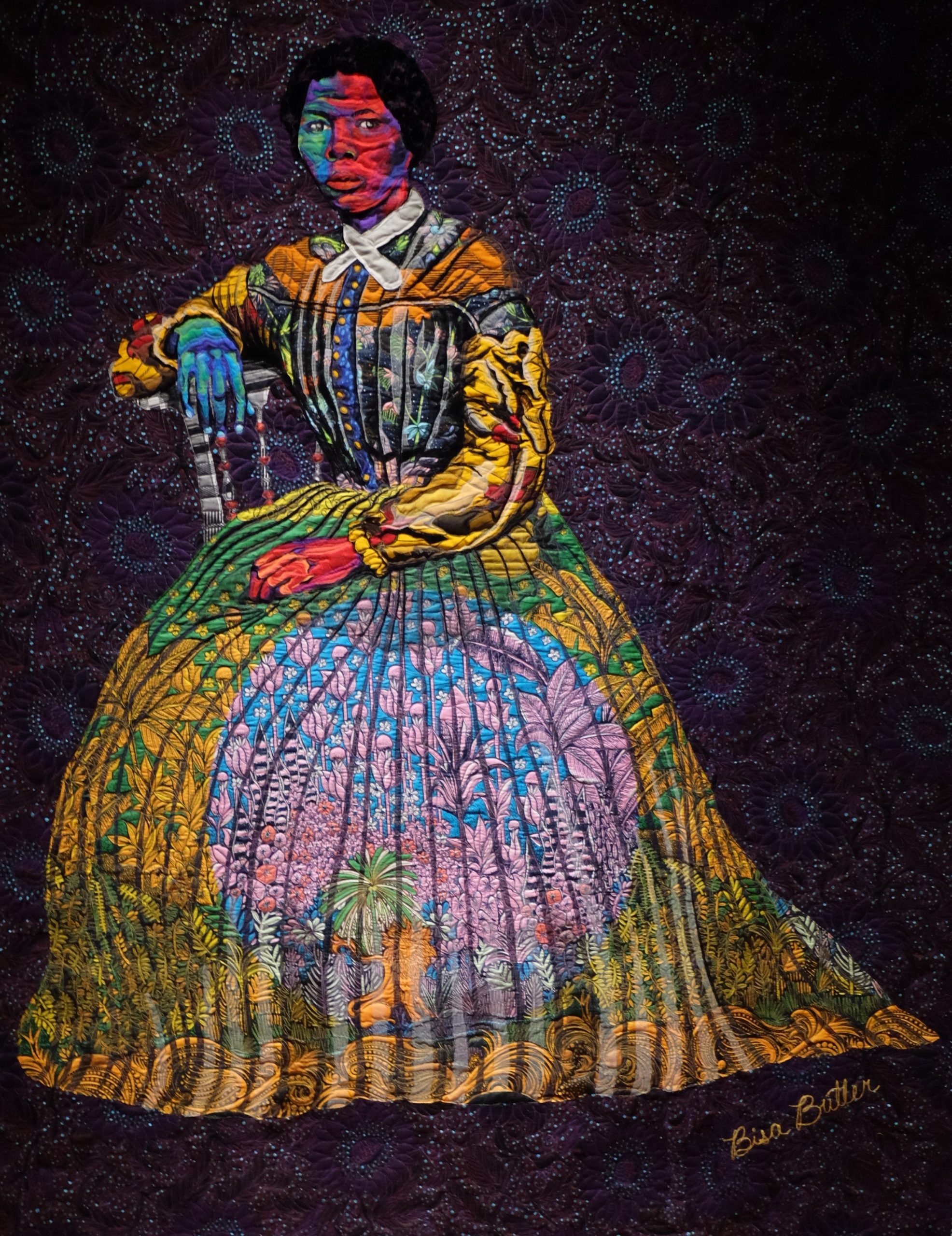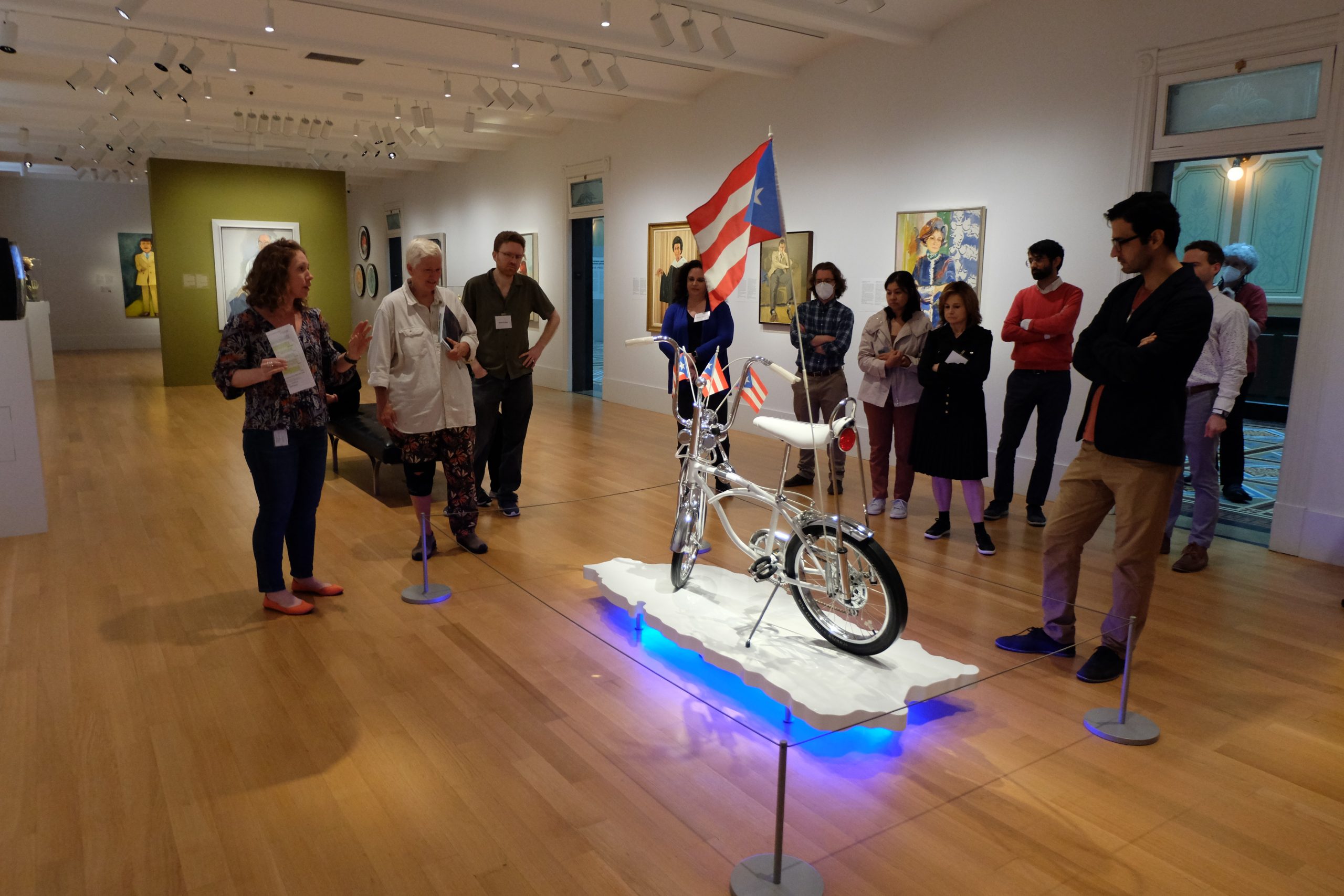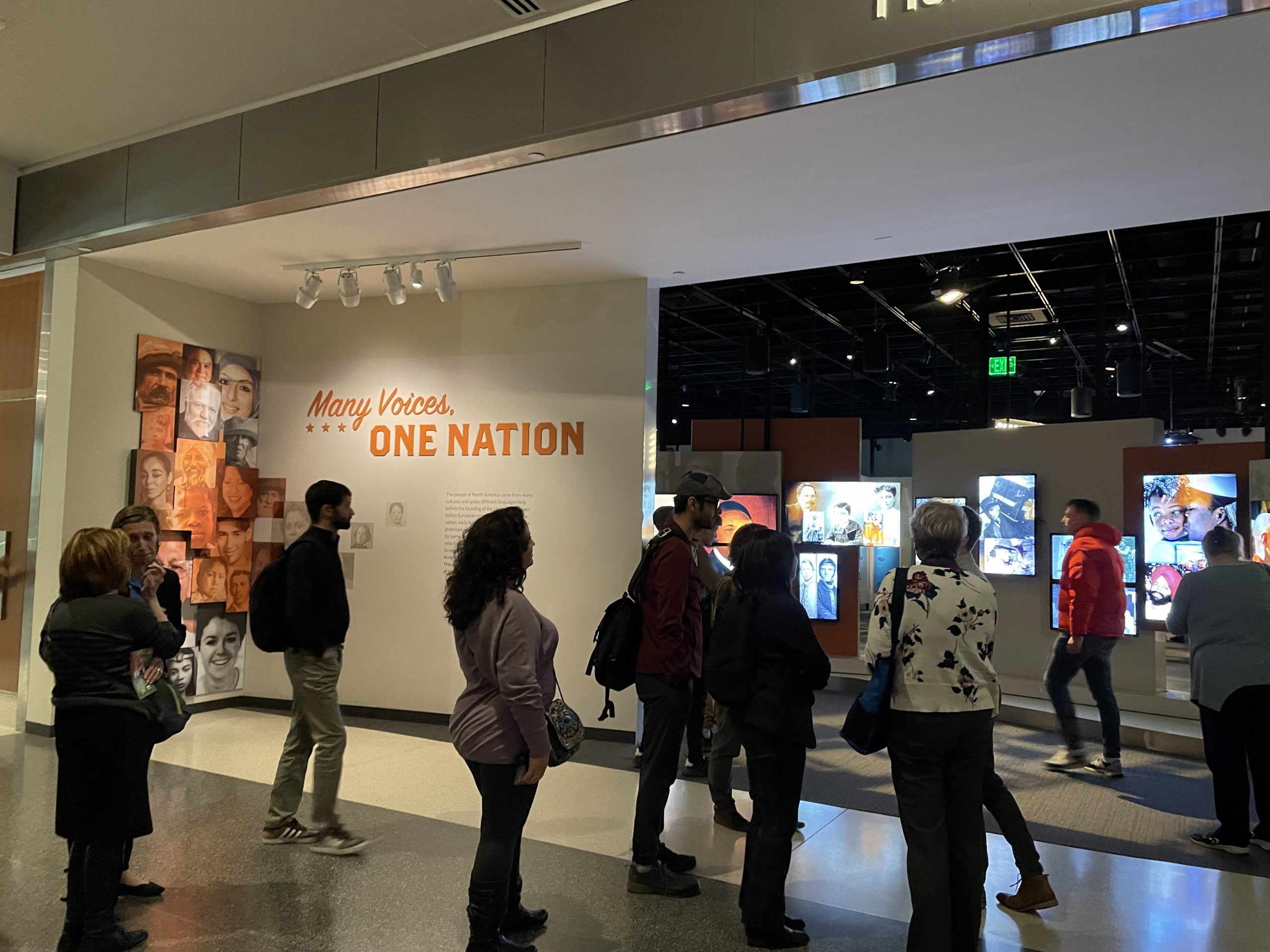When I last visited the National Museum of African American History and Culture, I started…
Professor Dijana Maunaga Trajkovic,
English Language for Academic Purposes
The challenges the faculty and students at Montgomery College have faced during the past couple of years are immense. We have risen to the occasion in ways I will always remember and be proud of. Going forward, however, it is necessary to enhance students’ critical thinking skills and their interaction with the important current issues of social justice as the pandemic showed us that the most vulnerable are as always the most affected. I believe it is our utmost responsibility to deepen students’ awareness of their identities and civic social responsibilities. And, I don’t think there’s a better place to do that than in Washington DC where the students are so lucky to have opportunities to learn from the many free resources available through the Smithsonian Institute. I made good use of these as I took my students on two separate field trips.
On November 18 and November 20 respectively, I took my ELAI990, English Language Advanced Integrated Skills, students to visit three different exhibits at two museums in downtown Washington DC. The first of these was at the National Museum of American History where we saw “Many Voices, One Nation” and “Greensboro Lunch Counter”. The second one took place at the National Museum of African American History and Culture in which we went to “Making a Way Out of No Way”. Both of the museums and all three of these exhibitions are testaments of the perseverance, resourcefulness, and resilience minorities and immigrants need to have in order to survive and thrive in the United States of America.
I asked students to select an artifact that resonated with them. An African Cowrie Shell Necklace was picked by a student who recognized it as the past currency of trade in his native country of Cameroon. A Mortar and Pestle was selected by another student from Cameroon who claims similar items are still used to prepare traditional homemade food. ”Lost in transit” items left in Arizona desert could have belonged to any of his family members from Honduras who crossed the US-Mexico border said another student. The incarceration Camp ID Tag that a student whose ancestors came from Japan felt closely connected to was yet another object that got picked for this assignment. I could tell these objects made them excited as they recognized them as part of their own history.
In addition, their enthusiasm was palpable and could be seen on their faces. One student was in total disbelief that the actual stools and counter from Greensboro Woolworth’s Lunch Counter are in the museum. Another had a very strong reaction to the National Museum of African American History and Culture exhibition and said that he “felt a mix of emotions.” At first, he said he felt excited to have the opportunity to learn more about this part of the US history, but at the same time, felt powerless and angry for all the injustice that has been committed against African Americans, from slavery to segregation. He stated he also felt immense sadness for the victims of these practices, and at the same time a lot of pride and admiration for all the people who have fought and risked their lives to defend the civil rights of people in their communities. These responses are exactly what I hoped to get out of these visits.
Towards the end of the first day visit to the National Museum of American History, we all gathered in the lounge area in front of the Greensboro Lunch Counter exhibit. As the students had watched the documentary movie, February One: The Story of the Greensboro Four, in preparation for this visit, it was interesting to watch them enter the area one at a time, and solemnly approach the stools, whose authenticity spoke for itself as objects from such an important part of this country’s history were right ahead of them. Students who usually rush after the class is over to another class or off campus to one of their many responsibilities, didn’t seem to be in a hurry to leave. Each and every one of them seemed to have taken a moment to themselves to process everything they encountered that day. Shortly after, most of them exchanged ideas for their projects with each other or made plans to visit other exhibits in the museum together. The cross-cultural bonding was at a full display as they helped each other hone-in on certain objects and their stories.
The purpose of my project was to empower students by teaching them the hard history and at the same time to make them understand that they themselves need to create possibilities in a world that often denies them opportunities. I wanted them to understand that change is possible and that there are always actions they can take and choices they can make to shape this world into a better, more equal place for us all. Besides the presentation on the artifact that they felt closely connected to, for the final stage of their project in this ELAI990 course, they are expected to discuss one of the social injustices that affected their life and to offer possible solutions including the ones they could potentially create in a form of a problem solution essay. They have been given tools to do research in Montgomery College library and Smithsonian Institute Museum websites, and they have been taught to do research and find reliable sources. These two parts of the final project cover all learning objectives for this integrated skills class, but above all hopefully they will help the students tell their own personal histories and make them realize how resilient they are and how much in charge of their own destiny they can be.





This Post Has 0 Comments